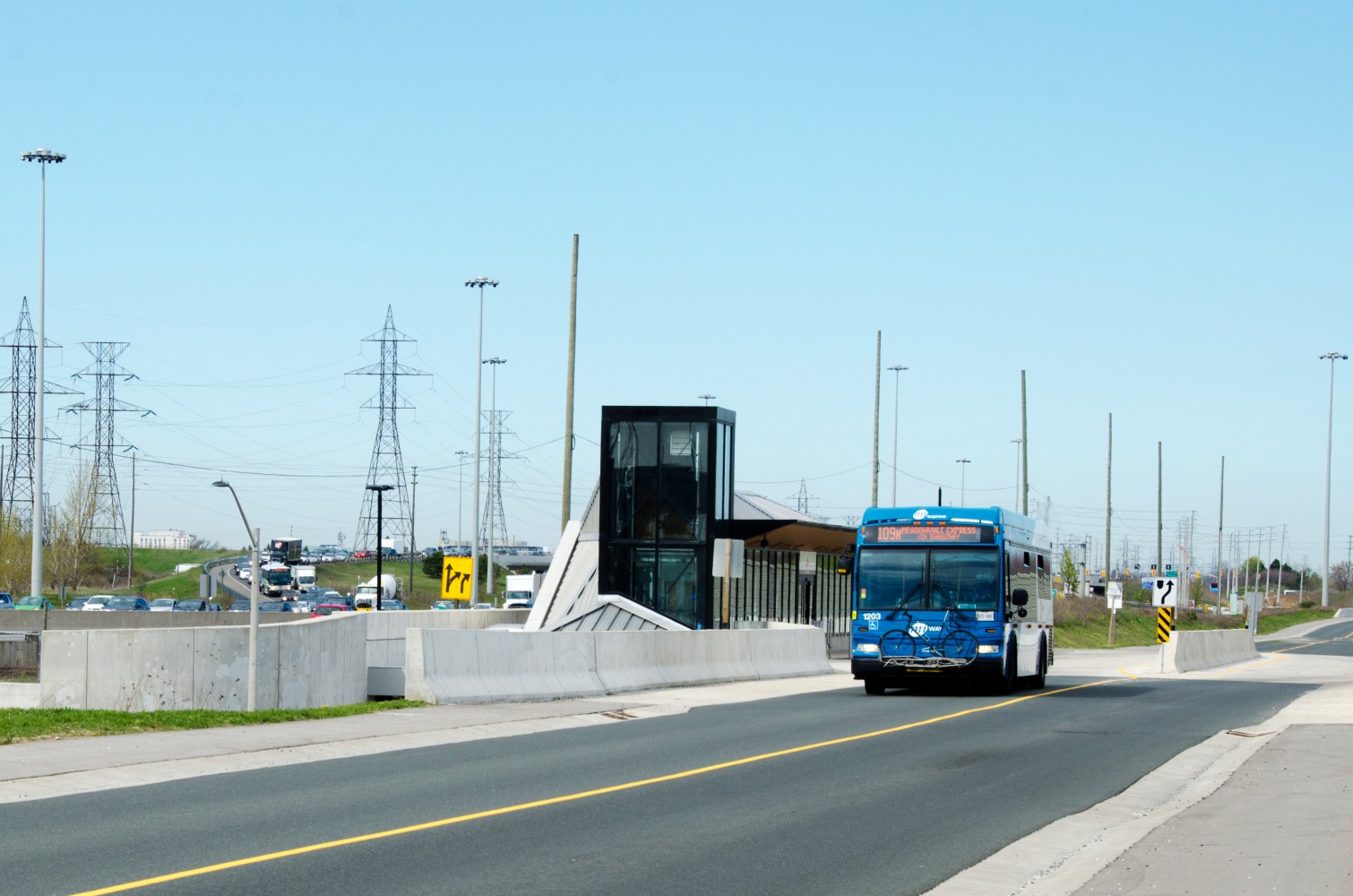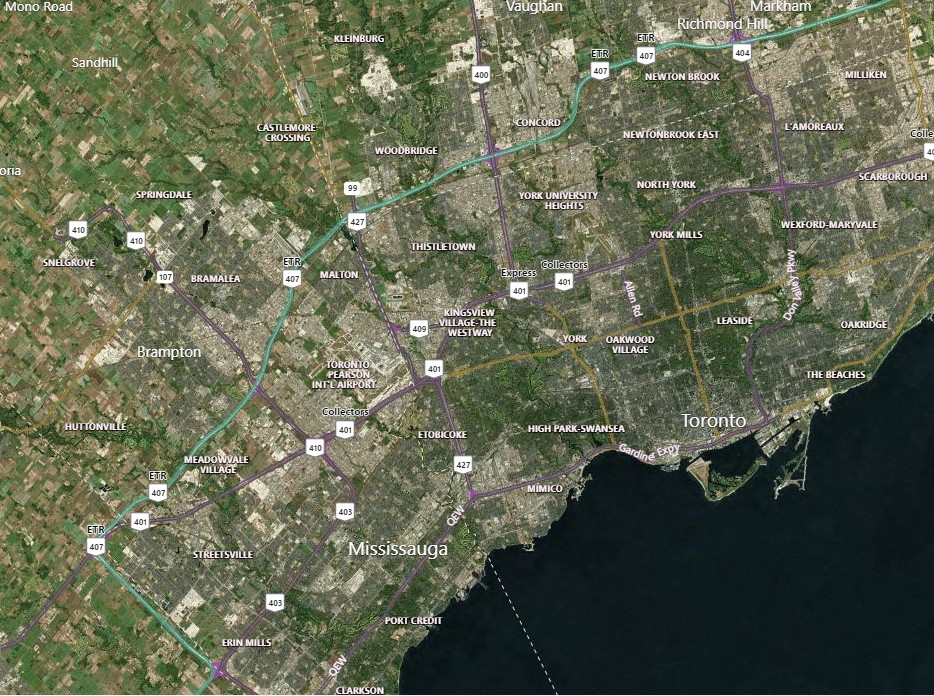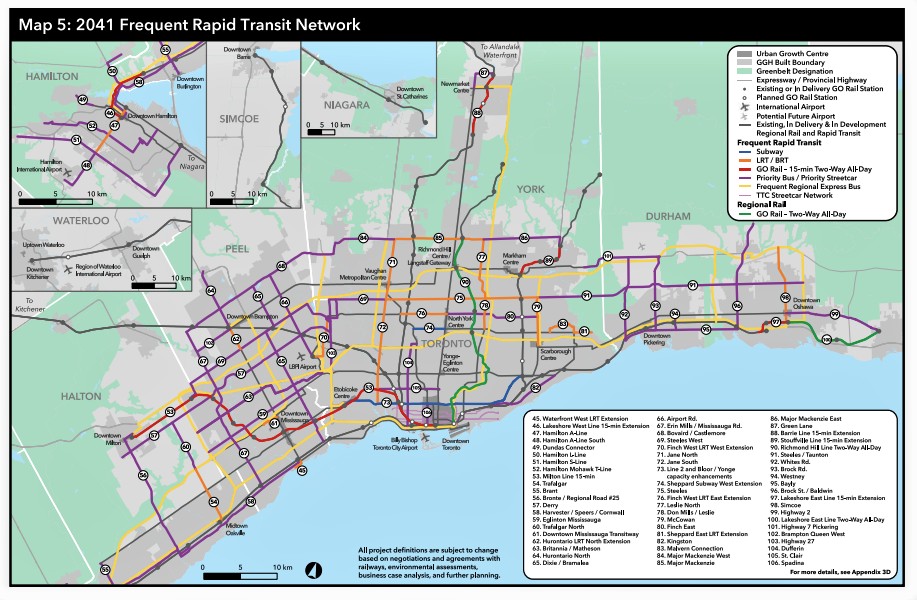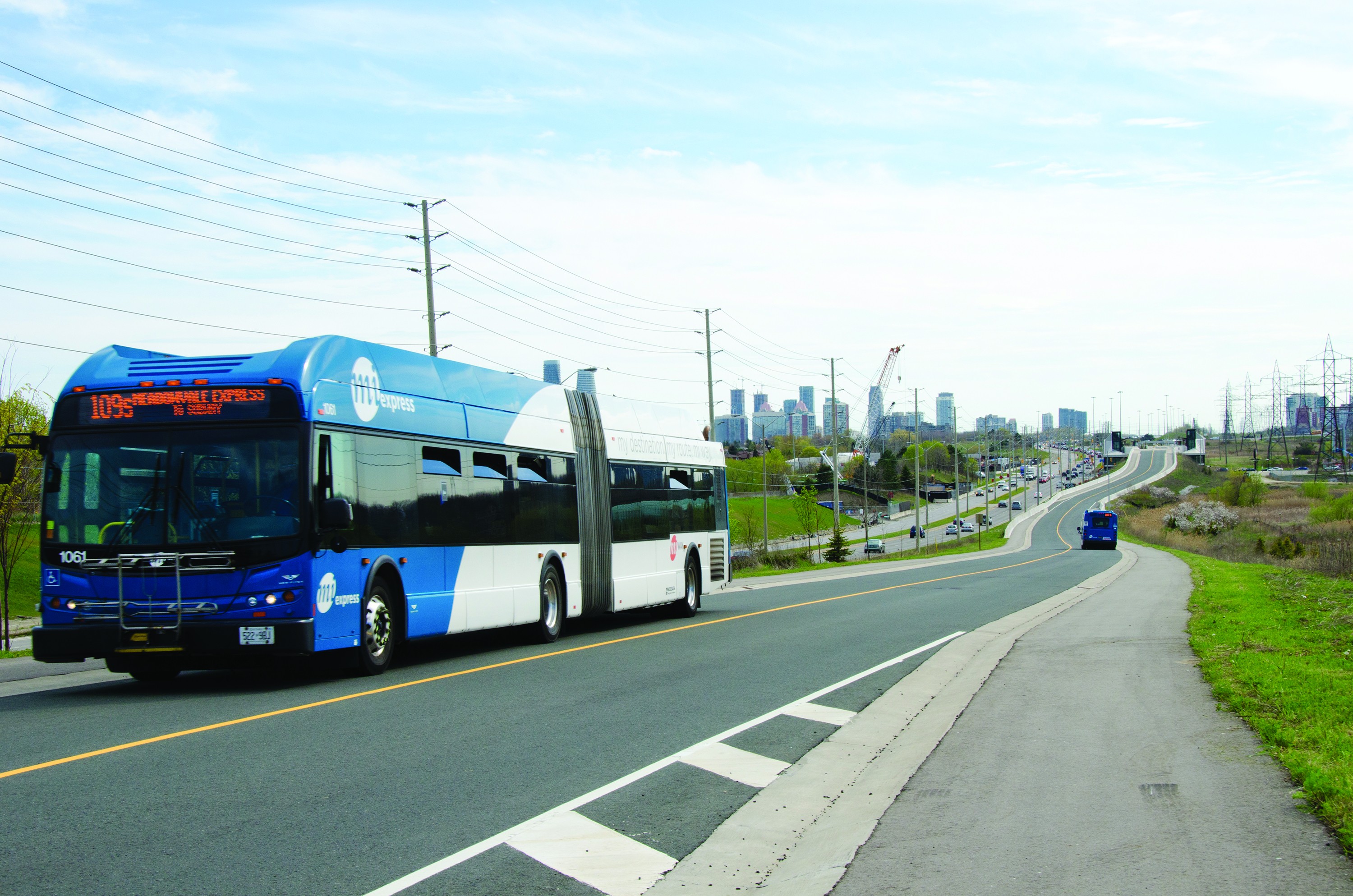
Eglinton Crosstown extension offers Mississauga Transitway a shot at redemption
From above, Mississauga, Brampton and Toronto all blend into one.
For those unfamiliar with the GTA, drawing municipal boundaries on a satellite map of the region is next to impossible. Even drivers who do not know the area particularly well would be hard pressed to tell you exactly when they passed from Mississauga to Brampton or from Peel to Toronto.
Transit users could tell you in a heartbeat.


Transit corridors linking Mississauga, Brampton and Toronto can create several complications for riders, leaving many to opt for driving instead.
All three cities are served by their own, separate transit services that integrate rather clumsily. MiWay buses drop passengers at Islington subway station in Toronto, while Brampton Transit buses service Mississauga’s Square One. Still, crossing between cities without changing vehicles is hard. In Peel, there’s no additional charge to transfer between services, but between Peel and Toronto, passengers pay a brand new fare.
The system is complicated and messy. It is a burden on an average of 1.4 million people who commute around the GTA daily by bus or train.
The simpler a transport system is to use, the more likely riders are to use it. If there are fewer transfers and less walking between stops, more people will opt for the bus or train. More obstacles means more people will choose to drive.
In Mississauga, the city’s entire public transit system relies on buses and the integration remains far from perfect. The introduction of the Hurontario LRT in four years time will go some way to improving transit within the city itself, but do little to connect people to neighbouring Toronto, a common destination.

Integrating different modes of public transit could be key to the Transitway's future success.
On that front, the Eglinton Crosstown West LRT extension looks set to play a key role. It is a critical missing piece in Peel’s transit puzzle.
The light rail project, entering the planning stage in the Region of Peel, will connect Toronto, the Mississauga Transitway and Pearson Airport. The planned extension will see Toronto’s Eglinton Crosstown LRT push almost 10 kilometres west from its currently planned terminus at Mount Dennis. It will head to Renforth Transitway station and then up to Toronto Pearson Airport.
“The project aligns with the Region of Peel’s Official Plan policies to improve interjurisdictional mobility through its connection to the future transit hub at Pearson Airport and its connection to the City of Toronto,” regional staff wrote in a report to council received last week.
The first phase of the project, being built in Toronto, is expected to be completed by 2022. The extension, still at the relatively early planning stages, is anticipated by 2030 or 2031, according to Peel staff.
It is one of several transit projects - including the Ontario Line and Scarborough Subway extension - being enthusiastically pushed by the provincial government and Premier Doug Ford.
One component of these projects, announced Monday, will be an effort to build transit oriented communities around new stations, including those on the Eglinton West LRT extension. The plan is aimed at allowing transit and housing to integrate more seamlessly and create communities specifically focused on a transit line.
"Instead of building stations in isolation, we will build fully integrated communities," said Kinga Surma, Associate Minister of Transportation (GTA), in a media release. "Transit-oriented communities will benefit the Greater Toronto Area by increasing ridership, reducing congestion, providing a mix of housing, including affordable housing, and providing critical local services and amenities like daycares and recreational spaces."
Much of the Elginton Crosstown West extension will run underground (highlighted in blue above).
In addition, the Eglinton extension particularly will serve two critical functions for the City of Mississauga: it will connect to the airport by light rail and it will extend rapid transit from Mississauga’s Transitway all the way to Kennedy GO station in the east of Toronto.
It offers the potential for transit riders to cross municipal borders almost as seamlessly as drivers do.
The majority of the 9.2 kilometre extension planned between Mount Dennis (at the end of Eglinton Crosstown) and Renforth (at the edge of the Mississauga Transitway) will be underground, with trains emerging to street level just east of the Mississauga Transitway terminus.
After that, the track will arc northwards and terminate at Toronto Pearson Airport.
The area around the airport has the second largest density of jobs in Canada after downtown Toronto, attracting employees from across the GTA. According to Pearson, just 14 percent of its workers commute using public transit, below even Mississauga’s relatively low average of 18 percent. Connecting the Transitway and Renforth to Pearson Airport by light rail could change that, making it easily and quickly accessible by transit from two major cities.
The extension of the LRT to the airport is part of a broader strategy Toronto Pearson Airport is pursuing towards the creation of a major hub based at the airport. The project, dubbed Union Station West, is earmarked for completion sometime in the early 2030s and would see the airport turned into a regional transit centre as well as an international interchange.
A rudimentary map shows a series of routes intersecting through the airport, cutting down travel times for those in Mississauga and massively boosting connectivity. The planned 407 rapid transit route, the Eglinton West LRT, the Kitchener GO Line, the Mississauga Transitway and the UP Express are just some of the routes that could pass through.
“The UP Express gave connectivity to downtown Toronto, but did nothing to us,” Mississauga Mayor Bonnie Crombie previously told The Pointer. “We’re still taking either a taxi, a car or a bus to Mississauga [from the airport]. We are certainly [lobbying for the creation of Union West], it is necessary.”
The extension between the end of the Mississauga Transitway and the Eglinton Crosstown LRT is perhaps even more critical for the city’s transit plans.
When the Transitway was first planned at the end of the 20th century, it was imagined that Mississauga’s bus rapid transit (BRT) corridor would link up with a similar project in Toronto. Passengers and vehicles would exit Mississauga seamlessly onto a priority bus corridor running along Eglinton Avenue. The plan suggested buses could travel the length of both cities without battling through congestion.
Over the years, that changed.
Toronto abandoned its plans for a bus corridor and looked to light rail, even as Mississauga was given the funding to build its BRT. The two plans no longer complimented each other and, when the Eglinton LRT opens in 2022, there will be almost 10 kilometres between Toronto’s light rail and Mississauga’s BRT. It will not be the perfect journey planners had originally dreamed.
Jonathon English, completing a PhD exploring bus services in the GTA, previously told The Pointer the timelines never matched up.
“Metrolinx basically took a whole pile of plans which the cities and regions had, in some cases for years and years, and just sort of revived them,” he explained of the funding Mississauga was given for its BRT to build in 2010. “The Mississauga Transitway has been around since the ‘80s. They built it because it was a plan which had been sitting on a shelf since the ‘80s, much more than because it served some particular desperate transit need.”
The Eglinton Crosstown West extension is a chance at redemption.
If it is delivered in a timely manner it can offer Mississauga’s beleaguered Transitway a new lease on life.
As The Pointer has previously reported, the Mississauga Transitway — with a price tag of more than half a billion dollars — has struggled to find ridership. Calculations show annual ridership along the line at just 2.9 million riders distributed between five separate bus routes. By comparison, in 2018, the 103 (Hurontario Express) had roughly 2.6 million riders. That number was on a single bus route compared to the Transitway’s five.
Despite the grim ridership numbers, the route is already more useful than it was when it launched. When the project opened, significantly over budget in 2017, it did not even offer Sunday service. Steady changes from MiWay have inched its numbers up every year, but ridership remains a far cry from the money invested in its creation.
Adding a seamless connection to the Eglinton Crosstown (as well as planned integration with the Hurontario LRT) could be revolutionary. It may transform the Transitway from an underused vanity project into a true spine route, connecting the entire city and region as a whole.
Email: [email protected]
Twitter: @isaaccallan
Tel: 647 561-4879
Submit a correction about this story


